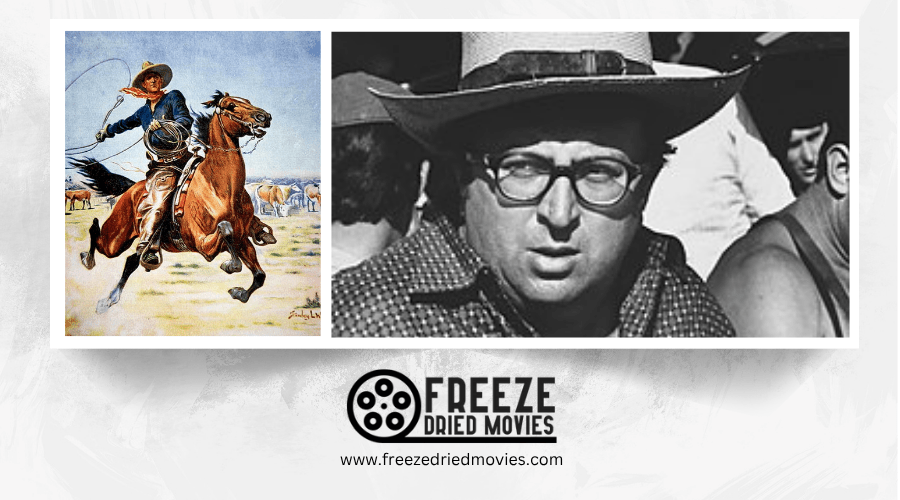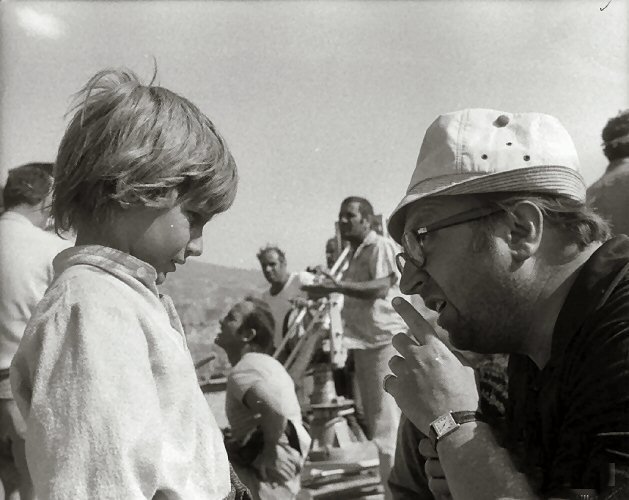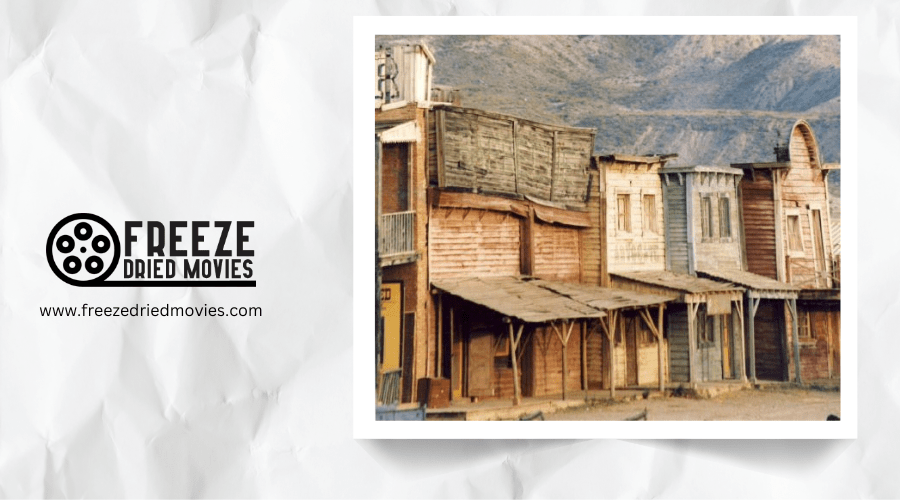The Art of Wide Vistas: Cinematography in Spaghetti Westerns

When you watch a spaghetti western, you're witnessing a visual revolution. While American westerns often embraced sprawling landscapes, Italian directors like Sergio Leone created a new visual language through contradictory techniques—extreme close-ups juxtaposed against vast, unforgiving terrains. This tension between intimacy and isolation wasn't accidental. It reflected the moral ambiguity of characters who weren't simply heroes or villains. What made these visual choices so powerful, and why do they continue to influence filmmakers today?
The Evolution From American to Italian Western Cinematography
While American westerns showcased the grandeur of frontier landscapes through expansive wide shots, Italian filmmakers revolutionized the genre with a dramatically different visual approach. Directors like Sergio Leone crafted a unique visual language by employing intimate framing techniques and extreme close-ups that pulled viewers directly into the characters' emotional states.
You'll notice spaghetti westerns abandoned the vibrant Technicolor palettes of their American counterparts in favor of desaturated, gritty aesthetics with heavy shadows. The cost-effective 2.35:1 Techniscope format allowed Italian cinematographers to maintain widescreen drama while working with smaller budgets. Their distinctive use of telephoto lenses isolated characters against backgrounds, creating palpable tension absent from traditional westerns.
This shift from sweeping vistas to intense close-quarters filmmaking fundamentally changed how western stories were visually communicated. This dramatic departure from the narrative continuity emphasis of 1930s Hollywood prioritized visceral emotional impact over the logical sequence of events that characterized earlier westerns.
Sergio Leone's Revolutionary Close-Up Techniques

When examining Sergio Leone's mastery of the spaghetti western genre, his revolutionary close-up techniques stand as perhaps his most distinctive contribution to cinema. You'll notice how his extreme close-ups create an intimate connection with morally ambiguous characters, allowing you to scrutinize every nuanced expression and subtle reaction.
Leone's genius lies in his distinctive visual language that juxtaposes sweeping landscapes with tight facial shots. This creates a rhythm that heightens both emotional impact and psychological complexity. By framing faces in meticulous detail, he reveals hidden clues and inner turmoil, effectively blurring the line between hero and antihero.
The impact of Leone's innovative cinematography extends beyond his own films, fundamentally reshaping Western film conventions and influencing generations of filmmakers who've adopted elements of his distinctive visual style. His work with Clint Eastwood exemplified the Hays Code abandonment that allowed filmmakers to explore more complex, morally ambiguous characters without traditional good-versus-evil resolutions.
Technical Aspects: Techniscope and Lens Selection in Spaghetti Westerns
Beyond Leone's innovative framing choices, the distinctive look of spaghetti westerns stems largely from technical filmmaking decisions that shaped the genre's visual identity. The Techniscope format, which packed two small 2.35:1 frames into standard 35mm film stock, created the genre's signature widescreen aesthetic while producing a characteristic grainy texture when projected anamorphically.
Telephoto lenses dominated the western genre's visual language, compressing distance and isolating subjects against vast landscapes. While rarely used throughout entire films (with Boot Hill being a notable exception), these tele-objectives became emblematic of the spaghetti western look. In contrast, wide-angle lenses appeared infrequently but could create immersive visuals when deployed strategically.
Similar to how optical techniques in 1930s cinema laid groundwork for future visual innovations, these distinctive western cinematography approaches influenced generations of filmmakers.
Modern filmmakers seeking to recreate this aesthetic can explore similar lens choices and digital post-processing techniques, despite limited access to vintage equipment.
Wide Shots: Capturing the Harsh Beauty of the Frontier
Nearly every spaghetti western leverages expansive wide shots to establish the frontier's brutal majesty, creating a visual language that stands in stark contrast to the extreme close-ups the genre is known for. When you watch Sergio Leone's films, you'll notice how he positions characters as mere specks against sweeping vistas, emphasizing humanity's vulnerability in nature's domain.
These carefully composed wide shots aren't merely aesthetic choices—they're narrative tools that communicate isolation and struggle. The European locations that doubled for the American West provided directors with rugged backdrops that became characters themselves. You're meant to feel the overwhelming power of the landscape as it dwarfs the human figures traversing it. This visual tension underscores the frontier's unforgiving reality while celebrating its raw, imposing beauty.
The Emotional Impact of Extreme Close-Ups in Character Development
While sweeping landscapes dominate the canvas of spaghetti westerns, the genre truly distinguishes itself in the opposite extreme—the unflinching, intimate close-up. When directors zoom into weathered faces, you're no longer just watching characters; you're peering directly into their souls.
These tight frames provide visceral character insight that wide shots simply can't deliver. You'll notice how the camera reveals silent anguish and moral complexity through squinting eyes, furrowed brows, and twitching lips. This technique transforms conventional western archetypes into psychologically complex figures.
The dramatic contrast between vast, unforgiving terrain and penetrating facial studies creates a powerful narrative tension. You're constantly shifting between the external world and internal struggles, experiencing the isolation and desperate choices these characters face. This visual approach invites you to understand their motivations beyond simple heroism or villainy.
The Lasting Visual Legacy of Spaghetti Westerns on Modern Cinema

Although decades have passed since their heyday, spaghetti westerns have cast long shadows across contemporary cinema that extend far beyond their original genre boundaries. You'll recognize their visual reinterpretation in films where directors deliberately juxtapose sweeping landscapes with intimate human moments, creating tension through contrasting scales.
Modern filmmakers continue to draw from Leone's playbook, employing unconventional framing and strategic natural lighting to convey moral ambiguity. The genre's distinctive approach—combining atmospheric wide shots with unflinching close-ups—has permeated crime dramas and neo-westerns alike.
When you watch today's visually innovative films, you're witnessing the enduring influence of spaghetti westerns' cinematic language. Their revolutionary aesthetic continues to inspire directors who experiment with camera angles and editing techniques to subvert expectations and heighten emotional impact.



